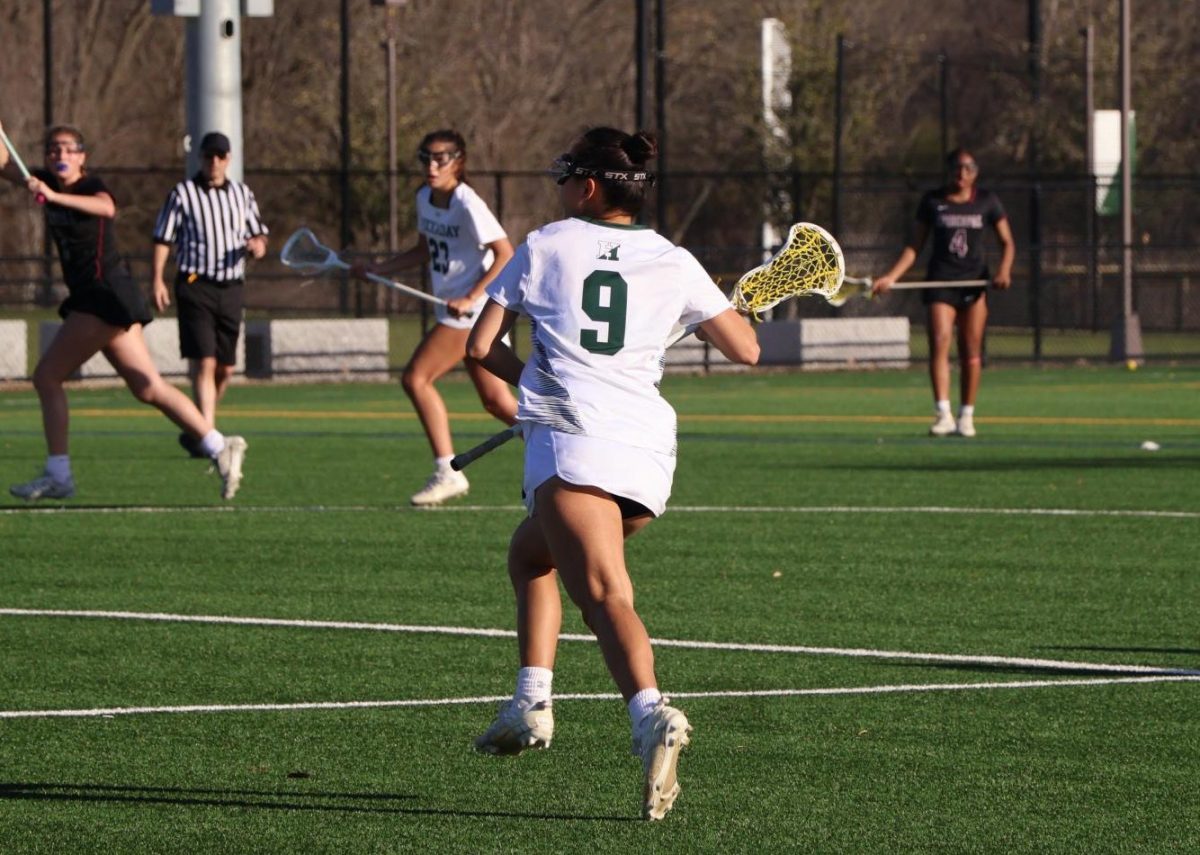In Upper School, we take subjects that prepare us for our academic lives in college: math, science, English and history. But one of the most important courses we take at Hockaday, one that can save our lives, has nothing to do with academics: self-defense.
Self-defense has been taught at Hockaday for 12 years by Meg Hinkley. The skills learned in the quarter-long course have never been more important than they are today.
Consider this: according to a 2015 survey by the Association of American Universities, nearly one in every four girls will be sexually assaulted in college. A study by the Harvard Law School revealed that 76 percent of eighth and ninth grade boys believe forced sex is acceptable under certain circumstances. In the same Harvard survey, 46 percent of eighth and ninth grade boys and girls believed that being raped was sometimes the victim’s fault.
Hinkley, who heads the self-defense program at Hockaday, has taught self-defense for 20 years. She firmly believes that self-defense is a skill every girl should know.
“To me, it’s the same thing as learning how to swim,” Hinkley said. “Most of us wouldn’t think of sending our kids out into the world not knowing how to swim, because there’s always going to be times when you might fall into the water.”
The dangers of misconceptions about sexual assault are some of the topics Hinkley strives to address in her classes.
“Most girls come in scared about the man who’s going to jump out behind the bushes,” Hinkley said.
While this is a possible situation one needs to prepare for, statistics show that the majority of rapists are not strangers to their victims. Eighty-two percent of all sexual assaults are perpetrated by a person the victim already knows, according to a study conducted by the U.S. Department of Justice.
In her lessons, Hinkley teaches more than just physical techniques. Sixty percent of the class is spent learning where a person might actually be at risk and how to avoid such situations, while only the remaining 40 percent focuses on physical self-defense.
“It’s not all wrestling and punching,” Hinkley said. “You should only use the physical techniques once all else has failed. It’s really only a last resort.”
Elizabeth Cathcart ‘13 had to use those physical techniques as a last resort two years ago. Cathcart, who was studying at the New York University’s Shanghai campus at the time, was at a karaoke bar celebrating a friend’s birthday when she excused herself to go use the bathroom.
“It was pretty late at night,” Cathcart said. “And there was a guy who was pretty obviously drunk just standing in the women’s bathroom.”
The man tried to converse with Cathcart, but when she informed him that he was in the wrong bathroom, he began to approach her. Cathcart initially used the non-physical techniques she had been taught by Hinkley, such as telling the man to “get back” and “not come any closer.” Cathcart was preparing to leave when the man grabbed her arm with both hands.
Cathcart’s self-defense training kicked in.
“The second he touched me, I just started yelling at him and did my best to get away,” Cathcart said. “I twisted my way [out of his grasp] and pushed him away with my other hand, like I had been taught in self-defense, and it worked.”
Cathcart then fled the scene. Other than a burn she received from the man’s cigarette, she luckily endured no physical marks from the encounter.
“In that situation, even though I was really scared, Hockaday had prepared me enough that I knew what to do,” said Cathcart, who is now a junior at Southern Methodist University. “A lot can be avoided with proper training, so knowing self-defense is really important.”
John T. Steen Jr., a member of the Texas Higher Education Coordinating Board, agrees that education is the answer when it comes to lowering the rates of rape at colleges. He has been honored twice with the Philanthropy Award from the Texas Association Against Sexual Assault.
“We must educate students and their parents on the realities of sexual assault,” Steen said. “Young women must be able to understand and identify the spectrum of sexual violence.”
Hockaday’s self-defense classes help this education by “taking a degree of fear out of certain situations,” according to Cathcart. “Mentally, you feel prepared.”
Just knowing self-defense has proven to keep someone safer; a 2013 study by the University of Oregon revealed that 12 percent of college girls who knew self-defense reported some kind of “sexual intrusion” over a one-year period. In comparison, over 30 percent of girls who did not know self-defense reported having received unwanted sexual contact.
“Everyone should know self-defense,” Hinkley said. “It may save your life.”









